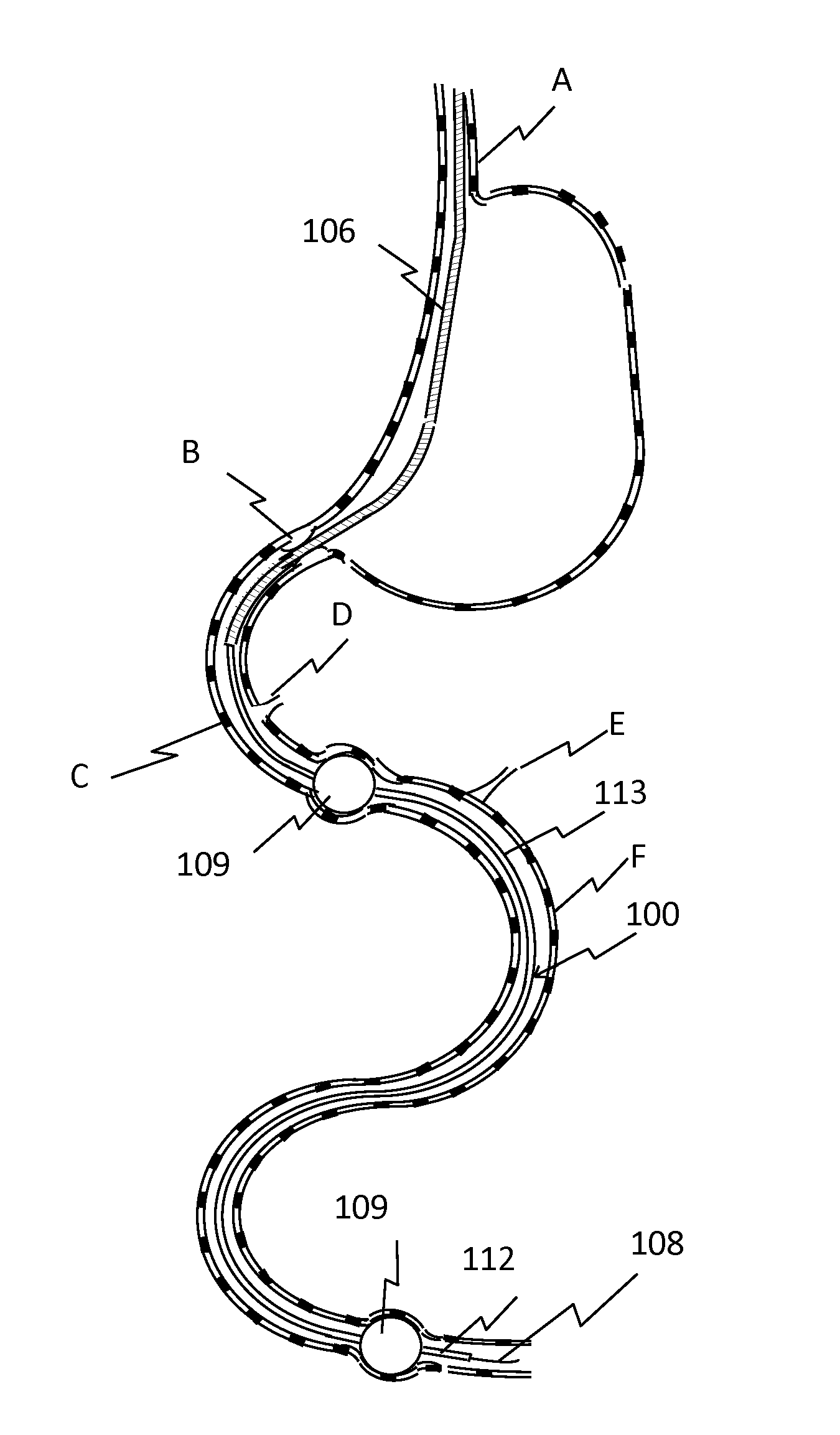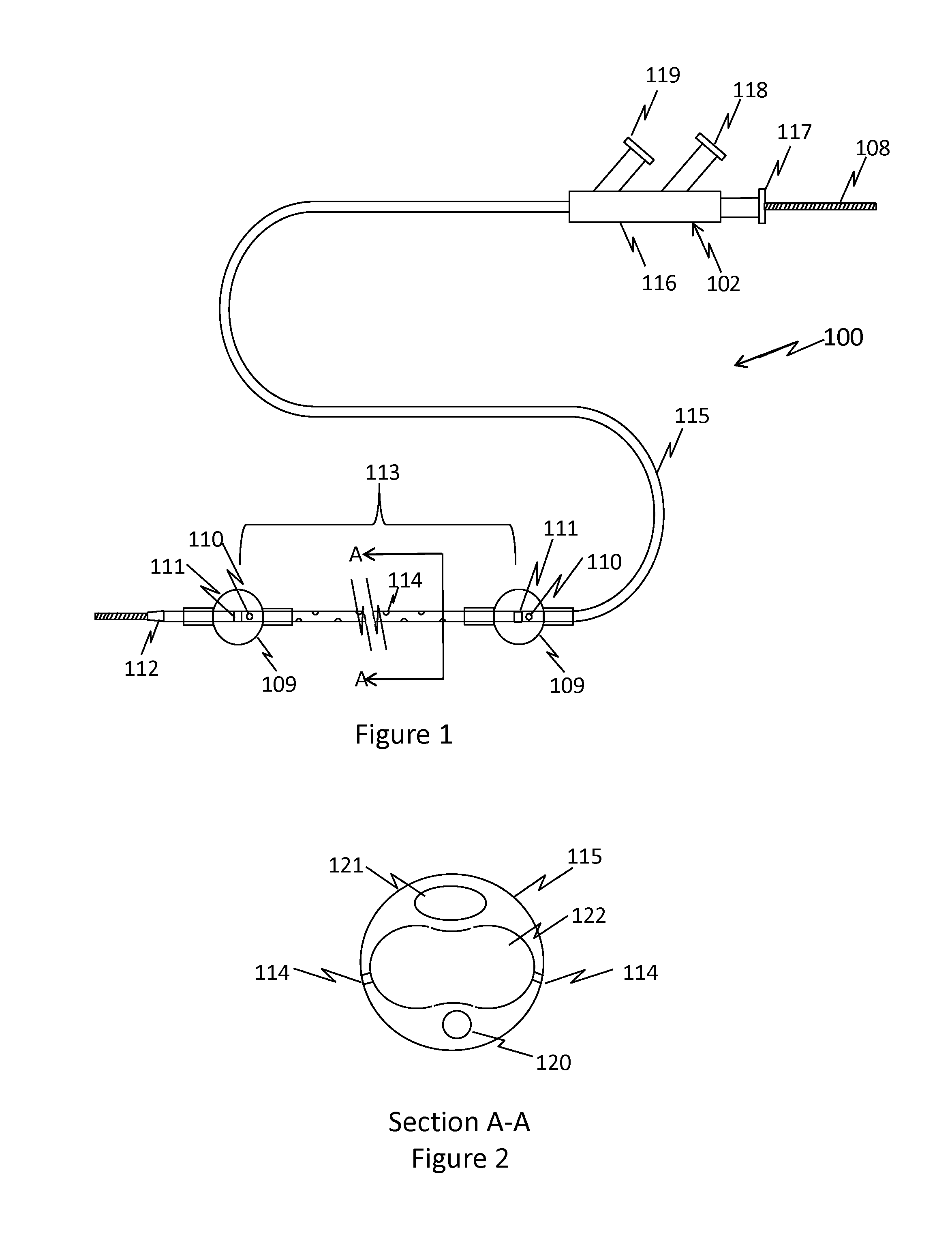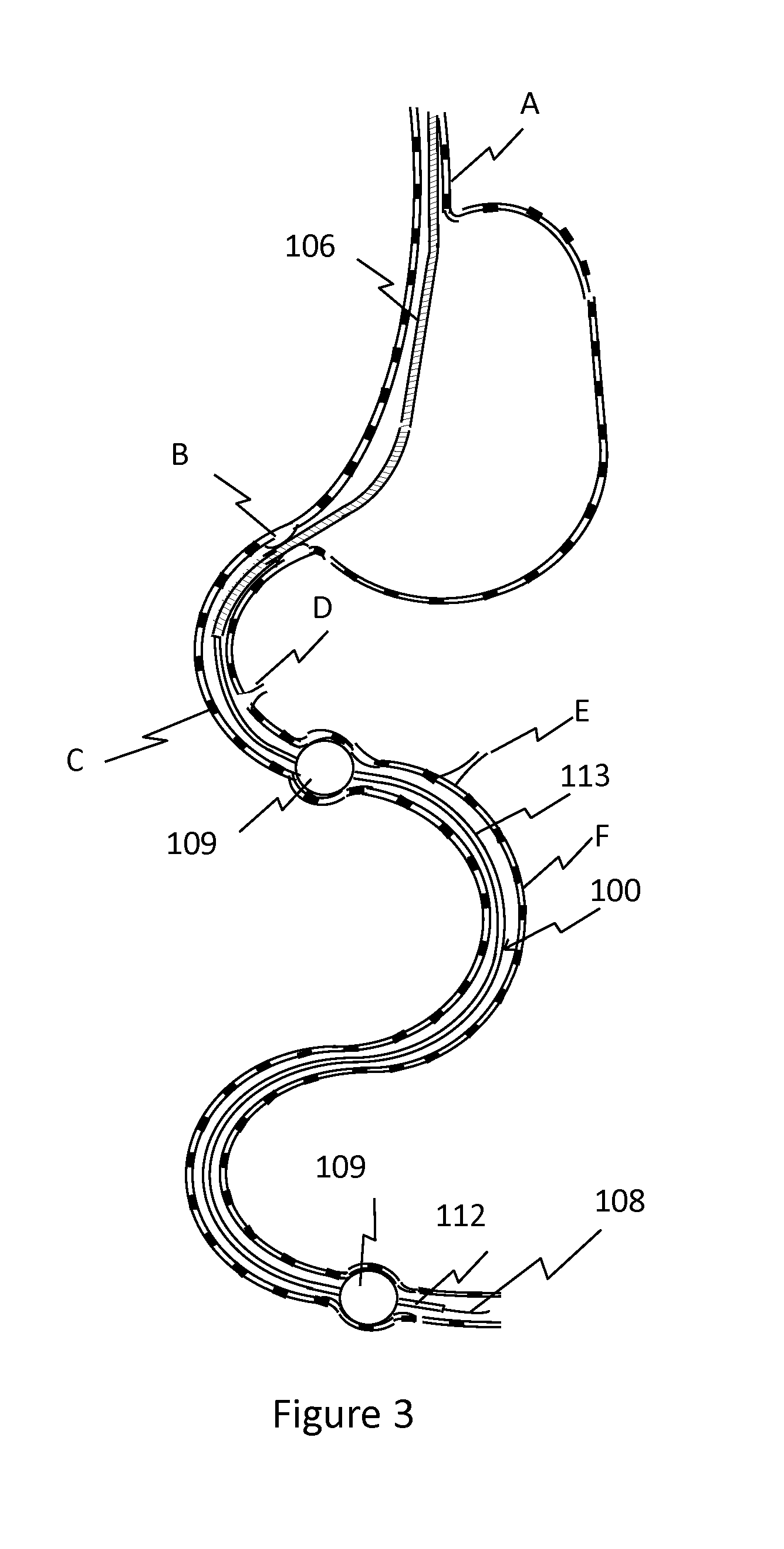Nutrient Absorption Barrier And Delivery Method
a nutrient absorption and barrier technology, applied in the field of medical devices, can solve the problems of temporary loss of the nutrient absorption ability of the treated section, non-functional or very limited function as to its absorption ability, etc., and achieve the effect of restricting nutrient absorption and limited function
- Summary
- Abstract
- Description
- Claims
- Application Information
AI Technical Summary
Benefits of technology
Problems solved by technology
Method used
Image
Examples
example i
[0028]An acidic solution is formulated using an organic or inorganic acid. The solution is intended to digest the epithelial elements of the mucosa rendering them ineffective in absorption of nutrients. A second effect of the digestion process will be to disrupt the neural pathways affecting nutrition uptake distal to the affected location. While the pH of the acidic solution may vary from 0.1 to 5, positive results have been achieved using a pH in the range of 0.5 to 1.5. Starting with 100 ml of 2 N HCl solution the pH is modified using NaOH using such that final pH is in the range of 0.5 to 1.5. A volume of the modified solution is drawn into a syringe of appropriate size and fixed onto the proximal port 118 of the isolated intestine and the solution is introduced such that the isolated intestinal mucosa is entirely immersed with the solution. The residence time of the solution in the intestine may be from 30 seconds to 15 minutes. Following, the isolated intestine is aspirated th...
example ii
[0033]A fixative solution is formulated such that the proteinaceous components of the mucosa and mucosal epithelium are crosslinked rendering them ineffective in supporting nutrition uptake. While crosslinking can be affected using varying agents such as carbodiimide, vitamin B12 / UV, and mono and dialdehydes. One preferred crosslinker is gluteraldehyde.
[0034]A crosslinking solution is formulated using gluteraldehyde. Starting from a base solution of 25% gluteraldehyde the solution is diluted using a buffering solution such as 0.02 M phosphate such that the final concentration of 0.1-5% v / v gluteraldehyde with a preferred concentration being 1%. The pH of the solution is secondarily adjusted to 7.0.
[0035]A volume of the crosslinker is loaded into a syringe and the solution is delivered into the proximal portion of the isolated intestinal section until the mucosa is fully immersed. The solution is left in contact with the mucosa for a period of 30 seconds to 30 minutes with a preferre...
PUM
| Property | Measurement | Unit |
|---|---|---|
| length | aaaaa | aaaaa |
| length | aaaaa | aaaaa |
| pH | aaaaa | aaaaa |
Abstract
Description
Claims
Application Information
 Login to View More
Login to View More - R&D
- Intellectual Property
- Life Sciences
- Materials
- Tech Scout
- Unparalleled Data Quality
- Higher Quality Content
- 60% Fewer Hallucinations
Browse by: Latest US Patents, China's latest patents, Technical Efficacy Thesaurus, Application Domain, Technology Topic, Popular Technical Reports.
© 2025 PatSnap. All rights reserved.Legal|Privacy policy|Modern Slavery Act Transparency Statement|Sitemap|About US| Contact US: help@patsnap.com



